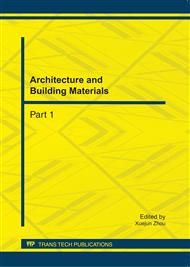p.507
p.511
p.515
p.519
p.524
p.531
p.535
p.539
p.546
Ranking of Strategic Management Indicators in Improvement of Urban Management by Using Multiple Attribute Decision Method of TOPSIS
Abstract:
Planning, investment and city management have been surprisingly become so complex and difficult because of the massive growth of cities and the dual role they play. Not only Complexity and importance of the problem are facing planners to this reality but also make them to quit outdated methods of urban management, and accept new ideas and updated methods. In this study, urban development strategy was considered by emphasizing on public participation, local government power and urban vision. Because urban vision is an ideal situation which society hopes to achieve in future. Certainly one of the most important goals of this project was citizen’s welfare. Thus we tried to explain and define these criteria’s such as development strategy plan and urban management. At the end the existing approaches has been evaluated by considering urban approaches as parallel options and determining its basic indicators and their efficiency. By considering existing approaches as a multi- dimensional approach, the multi- dimensional decision method like TOPSIS method has been used and consequently existing application ranked generally and since our country is developing so this could be an efficient step to the self- help of the cities.
Info:
Periodical:
Pages:
524-530
Citation:
Online since:
September 2011
Authors:
Price:
Сopyright:
© 2011 Trans Tech Publications Ltd. All Rights Reserved
Share:
Citation:


